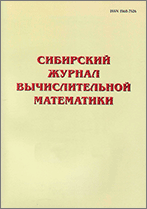|
This article is cited in 2 scientific papers (total in 2 papers)
A discrete stochastic model of water permeation through a porous substance: parallel implementation peculiarities
O. L. Bandman
Institute of Computational Mathematics and Mathematical Geophysics SB RAS, 6 Lavrentiev av., Novosibirsk, 630090, Russia
Abstract:
The parallel implementation peculiarities of a discrete stochastic model that simulates water permeation through a porous substance (soil) with a complex morphology are studied. The simulation should reveal the fluid flowing along pore curves and filling wets and cavities. The discrete stochastic model of the process, proposed earlier, is a stochastic cellular automaton (SCA), whose functioning is represented by a set of elementary local operators acting in a cellular space and imitating displacement (diffusion. convection, adsorption) and transformations (reaction, phase transition) of abstract or real particles. The microlevel of the process representation requires the cellular space of a huge size, and hence, the computations should be implemented on supercomputers. With this, the main problem is in the fact that obtaining an acceptable parallelization efficiency is possible only by inserting some determinism into the computation algorithm, i.e., by decreasing the model stochasticity. Although stochastic models are under intensive investigation, the parallel implementation methods for them are poorly studied. This gap is partially covered by the results of computational experiments, given in this paper, which allow one to assess the advantages and drawbacks of methods for the discrete stochastic mode of water permeation though implementing a porous medium on a multicore cluster.
Key words:
discrete simulation methods, stochastic cellular automata, stochasticity of the algorithm, transition rules, parallel computing, block-synchronous mode of functioning, porous material, permeation model.
Received: 10.08.2017
Revised: 30.08.2017
Citation:
O. L. Bandman, “A discrete stochastic model of water permeation through a porous substance: parallel implementation peculiarities”, Sib. Zh. Vychisl. Mat., 21:1 (2018), 5–21; Num. Anal. Appl., 11:1 (2018), 4–15
Linking options:
https://www.mathnet.ru/eng/sjvm665 https://www.mathnet.ru/eng/sjvm/v21/i1/p5
|

| Statistics & downloads: |
| Abstract page: | 426 | | Full-text PDF : | 150 | | References: | 42 | | First page: | 9 |
|




 Contact us:
Contact us: Terms of Use
Terms of Use
 Registration to the website
Registration to the website Logotypes
Logotypes








 Citation in format
Citation in format 
